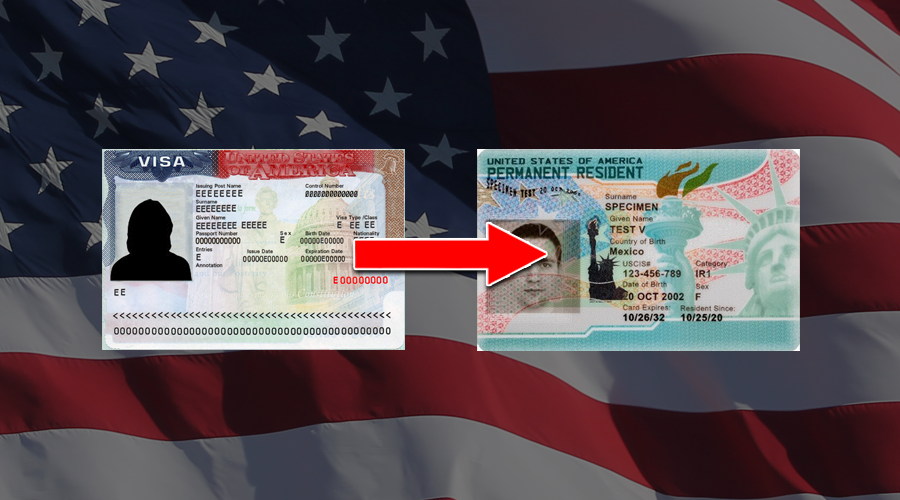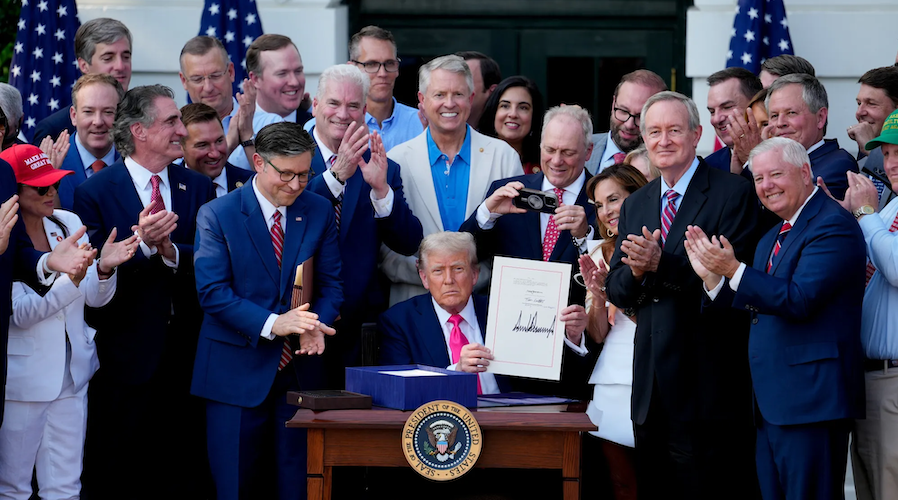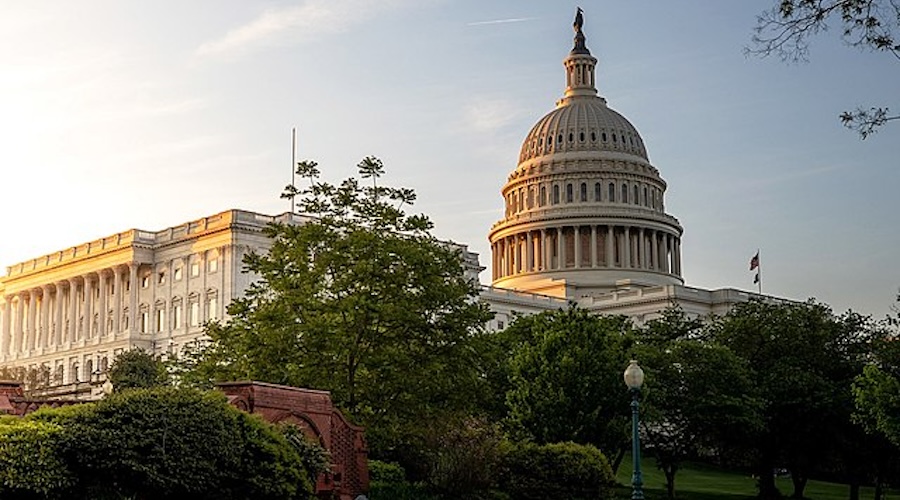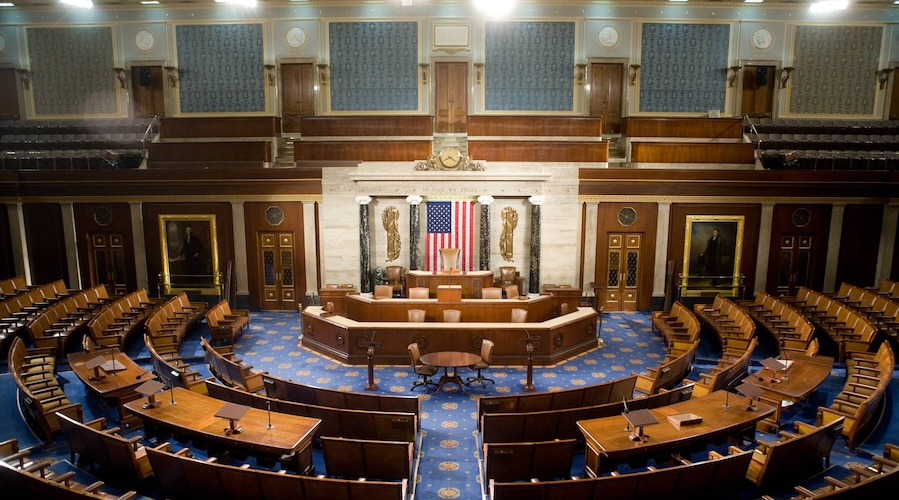
Adjustment of Status: This Exception Swallows the “Temporary” Rule
Fact Sheet - Wednesday, July 16, 2025
Federal Agency Oversight: USCIS
The Basics:
-
8 U.S.C. 1255 provides a pathway for aliens authorized for temporary stays for enumerated purposes to apply for adjustment of status to that of a lawful permanent resident (LPR). LPRs are granted “green cards,” which authorize them to remain permanently in the United States and put them on a path to citizenship.
-
Aliens with temporary visas may also apply to adjust their status to a different temporary visa category, but this Fact Sheet is limited to a discussion of 8 U.S.C. 1255, which allows adjustment to LPR status.
-
Aliens admitted as “nonimmigrants” are only authorized for temporary visits for the express purposes allowed by the statute. For example, an H-2A temporary agricultural worker is authorized to work for the employer that petitioned for their entry into the United States under the employment terms and conditions outlined in the petition.
-
Temporary visas are called “nonimmigrant” visas specifically because they do not authorize permanent residence in the United States, unlike an “immigrant” visa.
-
Some temporary visa categories have statutory durations of visa authorization (e.g., an H-1B visa is good for three years, and extendable once, for a total of six years), and others, like the F student visas, have “duration of status,” which authorizes the alien to stay for an indefinite period of time as long as the alien is in school. However, all aliens in temporary categories are supposed to leave the United States when their temporary visa expires.
-
Aliens seeking adjustment of status under this section of law must otherwise be eligible for LPR status through an existing pathway in the law. These include family sponsorship, employer sponsorship, EB-5 investors, the visa lottery, and various humanitarian programs.
-
Depending on the path chosen and whether that category has an annual limit on the number of green cards that may be issued, the alien may be required to remain on a waiting list until a green card becomes available.
-
In addition to the numerical caps on employment-based and most family-based green cards, aliens seeking LPR status in these categories are also subject to statutory “per-country caps.” The per-country caps were mandated by the law to ensure that no single nationality of aliens can overwhelm the category to the exclusion of other nationalities.
-
Nonimmigrant workers, such as H-1B visa holders, are often sponsored for green cards by their employers. Due to the cap on employment-based green cards, the per-country caps, and the large number of nonimmigrants previously sponsored by employers, newly sponsored H-1B workers often wait years for a green card to become available, depending on their country of origin. Current law permits them to remain and work in the United States during this time, even though they are no longer counted against the statutory caps on H-1B visas. The effect of this is to essentially nullify those caps.
-
DHS allows applicants for adjustment of status to apply for Employment Authorization Documents (EAD) at 8 CFR 274a.12(c)(9).
-
According to FY 2019 data released by USCIS during the first Trump Administration, the agency received 420,029 EAD applications from alien applicants for adjustment of status and approved 205,370 EAD applications.
The Problem:
-
Aliens can apply for nonimmigrant visas, including the B Visa, that require significantly less vetting than applicants for permanent residence. Once inside the country, they can apply to adjust their status to remain in the United States indefinitely with employment authorization.
-
Aliens should be fully vetted before they are admitted, not allowed to enter with minimal vetting, and then apply for a more thorough vetting after they are already here.
-
Regarding nonimmigrant visas that require applicants to demonstrate an intent to return home after the visa expires, permitting adjustment of status creates a real appearance of visa fraud, as it belies the intended return home.
-
Since EADs are authorized for simply filing an application for adjustment, and extremely long wait times for many aliens seeking to adjust, the whole process is used by aliens to remain in the United States even if they lack any lawful basis to do so.
-
That means minimally vetted aliens can enter the United States under false pretenses, apply to adjust status, and gain employment authorization for years.
-
Adjustment of status feeds the growing green card waiting lists across the immigration system and creates unreasonable expectations that nonimmigrants will be permitted to remain here permanently. It blurs the distinction between temporary nonimmigrant status and lawful permanent residence status.
-
This further frustrates immigration law enforcement when aliens are allowed to apply to adjust from within the United States and are later denied. This only marks the beginning of the process of issuing a Notice to Appear and proceeding through immigration court proceedings. On the other hand, if aliens were required to depart when their nonimmigration visa expired and then apply for LPR status from their home country, we could avoid the entire costly and time-consuming process of removal.
LEGISLATIVE RECOMMENDATION: Eliminate adjustment of status for all aliens except approved refugees and asylees, who are unable to return to their home countries. This would put the “temporary” back in nonimmigrant visas. It would discourage gaming of the immigration system, and it would ensure that American jobs are reopened to American workers once a nonimmigrant worker’s visa expires.
ADMINISTRATIVE RECOMMENDATION: End EAD eligibility for nonimmigrants applying to adjust status by striking 8 CFR 274a.12(c)(9).
Download Fact Sheet
Adjustment of Status: This Exception Swallows the “Temporary” Rule

Fact Sheet - The One Big Beautiful Bill Act - Immigration Provision Summary (Enacted)

Fact Sheet - The U.S. Immigration System

Fact Sheet - B-in-lieu-of-H1B: Another Illegal Tech Subsidy

Fact Sheet - FY26 House DHS Appropriations Bill -- Adopted Immigration Amendments
